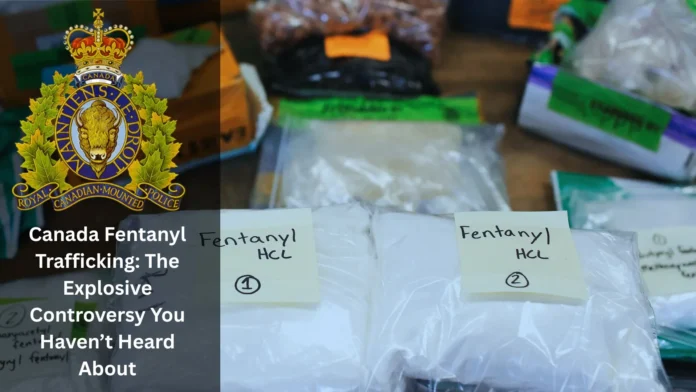Key Takeaways
- Canada fentanyl trafficking is drawing increased attention amid concerns over its impact on the U.S. opioid crisis.
- According to U.S. officials, Canada is becoming a more important route for the trafficking of fentanyl.
- Data tells a different story, pointing largely to the southern border.
- Political friction between the two countries is heating up.
- Joint initiatives are emerging, but trust is shaky.
Introduction
A new geopolitical flashpoint is emerging, not over oil or trade, but over a tiny yet deadly synthetic opioid: fentanyl. The U.S. has set its sights on Canada, accusing it of becoming a significant player in the North American fentanyl crisis. With tensions building and political rhetoric intensifying, the question remains: Is Canada truly a major contributor, or is this part of a broader narrative shift?
How the Accusations Began
The debate ignited when high-level U.S. officials publicly alleged that Canada had become a preferred route for fentanyl smuggling into America. According to these officials, as the southern U.S. border became more fortified, traffickers adapted—allegedly redirecting their operations through Canada with help from international adversaries and organized crime.
These accusations have not only sparked diplomatic irritation but have also triggered discussions on national security, public health, and foreign relations.
The Numbers Tell a Different Story
Despite strong claims, the actual numbers paint a different picture. Fentanyl seizures along the northern border are marginal compared to those at the southern border. The vast majority of the synthetic opioid still enters the United States through land ports shared with Mexico.
These statistics cast doubt on the narrative of Canada as a primary supplier and raise questions about the intent behind the accusations.
Canada’s Internal Fentanyl Problem
Like many other countries, Canada is dealing with a fentanyl issue at home. Illicit labs and organized crime networks are active within its borders, particularly in certain western provinces. However, Canadian officials argue that this production is largely for internal consumption, not export.
While acknowledging the seriousness of the issue, Canada maintains that the problem is largely contained within its own cities and communities, rather than flowing south across the border.
Political Fallout Between Allies
The blame game has had serious diplomatic consequences. Extreme suggestions and harsh vitriol have been exchanged, bringing a delicate topic into the political spotlight. There are even claims that the U.S. is using trade tariffs and other policy levers as retaliation.
Statements made by prominent leaders on both sides have only served to deepen the divide. What was once a cooperative front in battling transnational crime is now tinged with distrust and public posturing.
Is Cooperation Still Possible?
Despite the political noise, there are signs of cooperation. Both countries have shown interest in joint task forces and intelligence-sharing agreements to tackle the drug crisis more effectively. Surveillance, border control technologies, and coordinated law enforcement efforts are beginning to emerge as focal points.
The challenge lies in restoring mutual trust—without which, even the best-designed strategies may fall short.
Conclusion: A Crisis or a Convenient Scapegoat?
The discourse around Canada fentanyl trafficking is riddled with contradictions, political maneuvering, and data that often doesn’t match the headlines. While it’s undeniable that fentanyl remains a critical threat to public health and safety, blaming Canada may oversimplify a problem that is far more complex and deeply rooted.
What’s needed now isn’t finger-pointing, but clear-eyed collaboration based on facts, not fear.


